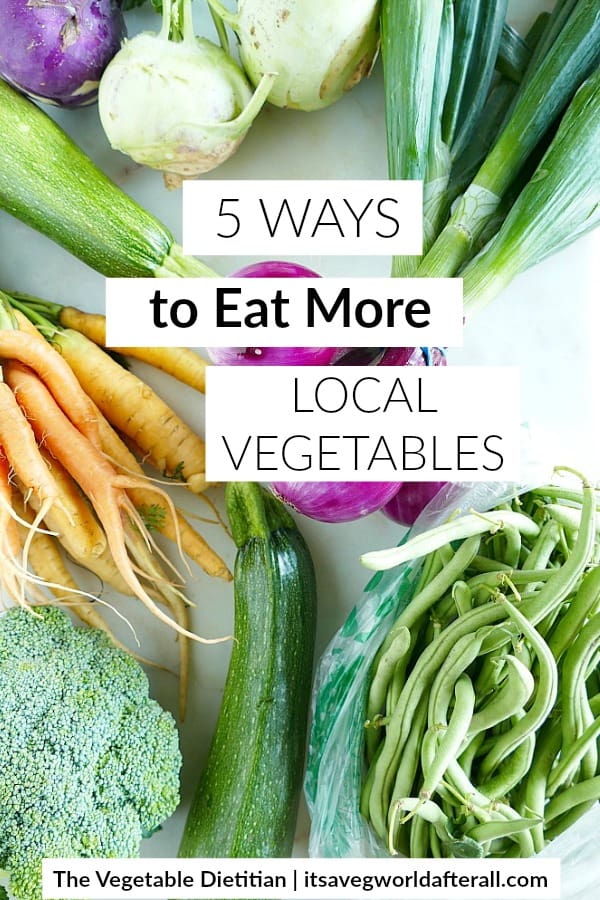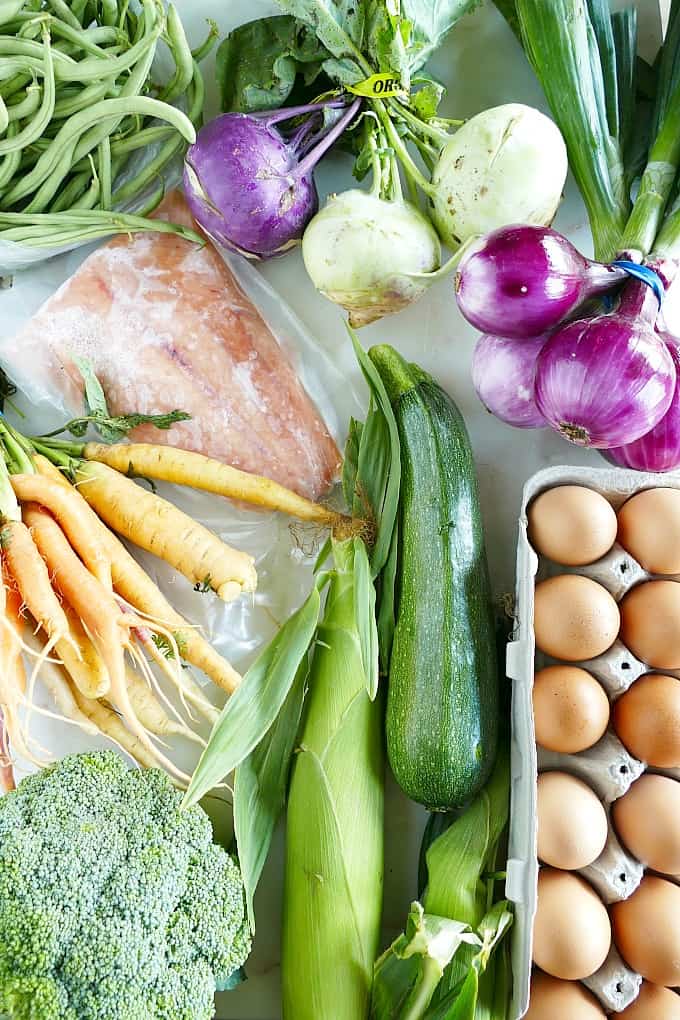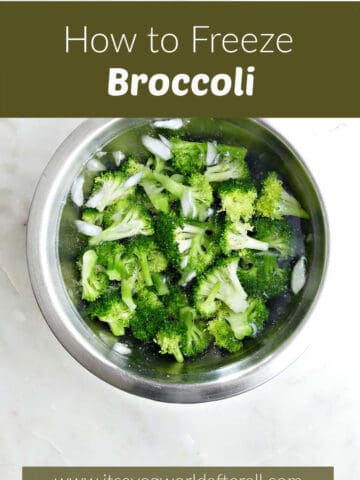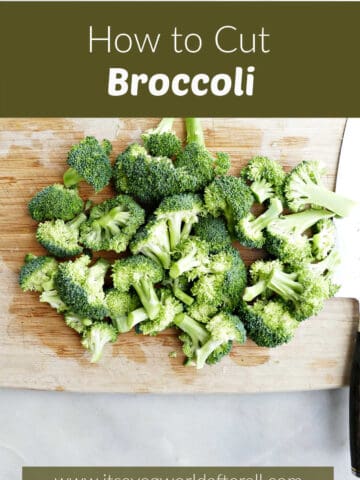
You’ve heard it here before: summer is the BEST time of year to eat local vegetables.
During these sunny months, bell peppers, tomatoes, zucchini, and other summer classics seem never-ending!
With so much available produce, it’s a great time to eat more locally grown vegetables to support your community and improve your health.
Read on to learn why it’s beneficial to eat local vegetables and how you can start doing it!
Improving Nutrition Through Local Vegetables
As someone who studied environmental studies and sociology as an undergrad, supporting local food systems is one of my biggest passions. But in recent years, my mind has been devoted to understanding the interactions of food with the human body instead.
Even though I enjoyed learning about this and practicing as a clinical dietitian, I found myself coming back to local food time and time again.
Nothing interests me quite as much as reading about local food, visiting farmers markets, or strolling through co-ops to check out new local options.
Above all, I love preparing dishes with seasonal vegetables for private practice clients or blog posts.
My true passion is inspiring people to increase their veggie intake and celebrate local food. By doing this, I also help them improve their nutrition and health.
To me, eating more local vegetables and making nutritious food choices are one in the same.
That’s why I devote this online space to teaching people the why and how of eating more veggies, especially local ones!
Why Are Local Vegetables More Nutritious?
Simply put, the less time a vegetable takes to get to your plate, the better.
Farmers are able to pick their vegetables at the peak of ripeness if they plan to sell them soon. Allowing vegetables to ripen fully improves their nutrition and taste.
Once vegetables are picked and harvested, they begin to lose their nutrients (1, 2, 3).
Veggies that are produced and sold locally do not have to travel far distances while their nutrition decreases by the day.
So, while eating vegetables of all kinds is always a nutritious choice, enjoying local vegetables is even better!

How Else Does Local Food Help the Community?
Aside from being more nutritious, local vegetables have other benefits for the surrounding community.
Vegetables that are grown and sold locally have minimal transportation time, which translates to using fewer fossil fuels.
Even more, supporting local farmers by purchasing their vegetables helps ensure that they will continue to maintain the green spaces and farmland they cultivate. These green spaces are vital for healthy human habitats.
Finally, giving money directly to farmers benefits them and eliminates the need for a middle man or long chain of transactions.
This also means your money isn’t going to a company in another city or state, which boosts the local economy.
So there you have it. If you are interested in upping your local vegetable game, improving your health, and benefitting your community, there are several ways you can do it!
5 Ways to Eat More Local Vegetables
1 – Go to Farmers Markets…Regularly
Of course, this might seem like a no brainer, but becoming a regular at your local farmers markets is the easiest way to eat more local vegetables.
Whatever time you can commit to making this happen, whether it’s once a month or twice a week, will be beneficial.
In the summer, I try to go once a week and scan all of the stands before I make my final purchases. If I can, I will get a few things from every farmer to support as many of them as possible.
Going to farmers markets will also help you become aware of what vegetables are in season in your area.
2 – Get Involved with Community Supported Agriculture (CSA)
CSA is a great way to support local farmers without having to make a trip to the market.
Most farms sell different types of produce shares that you can sign up for during harvest season.
For instance, there is typically an option to get a box seasonal vegetables every two weeks. Some farms even throw in eggs, fruits, or meat products.
The options vary from farm to farm, but there is usually something for families of every size.
The best part?! The boxes are delivered to a central pick-up spot in your neighborhood or even to your house!
To find a CSA in your area, check out this tool from Local Harvest.
3 – Become a Co-op Owner/Member
One of the best things that Will and I did when we moved to Minneapolis was become a member/owner at the Wedge Community Co-op.
We paid a one time fee to get our member status, which makes us eligible for discounts and special deals.
The co-op is a local food oasis! Not only are there tons of local veg, but they also carry other local foods from honey to granola to ice cream and more.
Joining a co-op in your community is a great way to embrace the local food scene.
4 – Eat at Restaurants that Source Local Foods
With the surge in popularity of farm-to-table eating, it isn’t difficult to find restaurants that use local foods.
Check out Yelp, Google, Instagram, or Facebook to discover spots in your area.
One of my favorite farm-to-table restaurants in Minneapolis is Wise Acre Eatery. If you haven’t been, you need to go…yesterday!
5 – Shop at Stores that Identify Local Vegetables
If you don’t have a farmers market or co-op in your area, there are still ways you can buy local vegetables.
Most grocery stores label the sources of their vegetables and may even add a second designation to locally sourced veg to help customers find them.
If you don’t see any signs or labels in your store’s produce section, ask someone who works in that part of the store. They are usually more than willing to share where they sourced their produce.
—
Of course, you could also get super local and grow your own food. But I think that’s a topic for another blog post, don’t you agree?
Looking for more ideas on how to eat local foods? Let me know in the comments below!
-Lizzie





Comments
No Comments